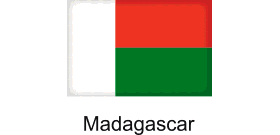 Madagascar's future airport structure
Madagascar's future airport structure
At 592,800sqkm, Madagascar is the world’s second largest island country. Sitting in the Indian Ocean, some 400km off the coast of east Africa, it has 56 airportsand civil aerodromes open to public air traffic, including eight international airports, four mainly dedicated to domestic flights, and 44 secondary aerodromes.
A route development programme for 2020, created before the coronavirus pandemic, aimed at increasing connectivity and traffic with major hubs in Europe and the Middle East, promoting short-stay trips, and building partnerships with tour operators. Recent studies had showed that Madagascar airport traffic could be stimulated by tapping into new markets within the Southern African Development Community (SADC), the Common Market for Eastern and Southern Africa (COMESA), Asia-Pacific, the Middle East, eastern Europe and Latin America.
Four major areas for international traffic or regional hubs have been identified – the new Andrakaka Airport (north), Philibert Tsiranana Airport(west), Ambalamanasy Airport (east), and Akoronga Airport (south).
In 2017, Airports of Madagascar (ADEMA), which is in charge of the construction, management and operation of civil secondary airports and aerodromes, launched a partnership plan to develop and operate 54 airports and aerodromes, apart from Ivato and Nosy Be, which are managed by the Ravinala Airports consortium.
“Due to insularity, the economic development of Madagascar is highly dependent on international trade,” explained ADEMA CEO Herison Andriamihafy. “Air connectivity is vital to attract foreign investors and to amplify trade and tourism, and enable us to reach the milestone of 500,000 tourists in 2023.” Since 2016, the international airports of Antananarivo-Ivato and Nosy Be have been operated by Ravinala Airports – a consortium of investment management, design, maintenance, and construction companies – under a 28-year concession. These airports handled 1,048,000 (a record) and 215,000 passengers respectively in 2019.
The new 17,500sqm Ivato terminal, built by Bouygues and Colas Madagascar, was delivered in October 2019, six months in advance and in accordance with the initial costs. It will respond to the growth in traffic in the coming years.
According to Ravinala Airports CEO, Patrick Collard, the facilities will provide international-standard service. “They will strengthen our collaboration with the state and the various tourist and airport entities, to give a new image of Madagascar and further contribute to the development of the country,” he added.
